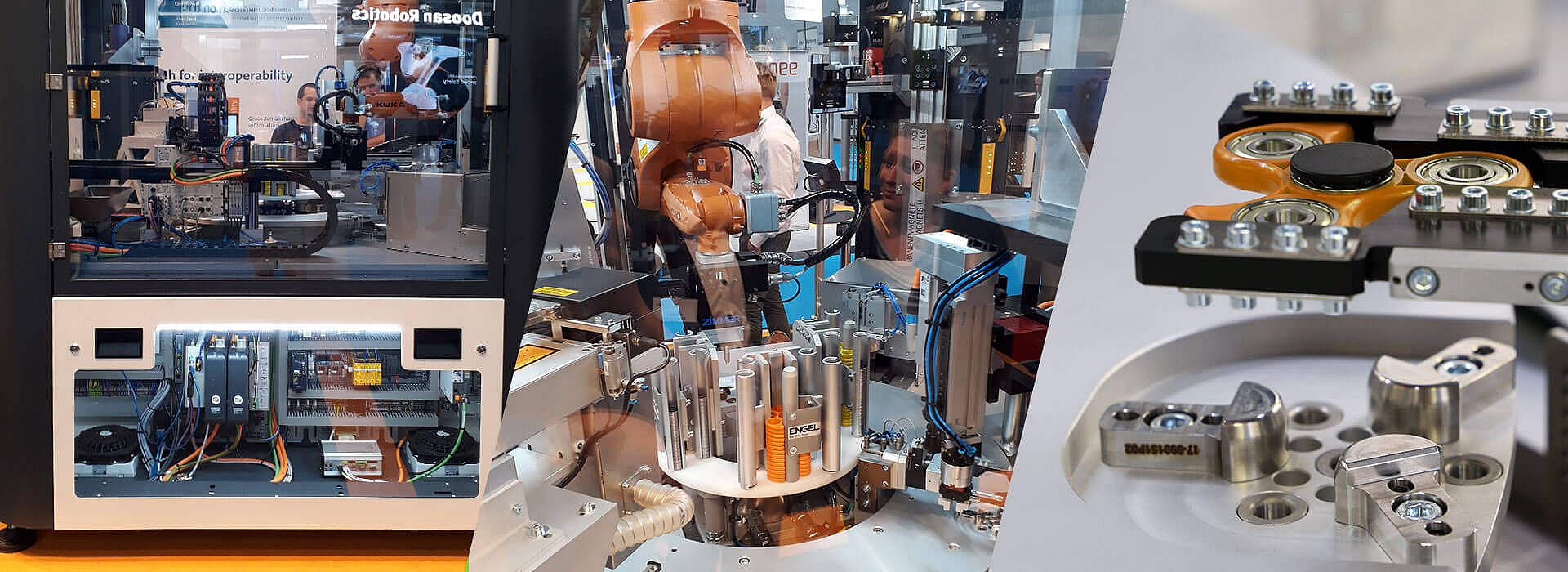To date, the one big hurdle in connecting product system components has been the use of manufacturer-specific software, plus the enormous effort involved in reprogramming it. In conjunction with the German Association of Manufacturers (VDMA) and other industry partners, fortiss is introducing a manufacturing cell with smart components from various manufacturers that utilize OPC UA (Open Platform Communication Unified Architecture) communications protocol. OPC UA is the Esperanto for all production system components. It functions independent of the manufacturer and platform and enables all components to “speak” the same language. By relying on this open protocol, the components can communicate, exchange data and interact. Plant operators can set up and connect their systems in a modular fashion.
The use of automation systems is an especially difficult challenge for small-to-medium enterprises (SMEs) because these systems are designed for structured, non-varying work flows and are cost-effective only when producing high-volume batches. The company furthermore needs to have personnel with the required skills to program the components.
These obstacles are now out of the way. Working together with roughly 20 partners from industry, plus the VDMA, fortiss developed a demonstrator that enables the use of the Open Platform Communication Unified Architecture – or OPC UA for short – as the machine-to-machine communication standard.
OPC UA demonstrator
With an OPC UA demonstrator in the form of an industrial assembly cell, the project partners utilized components and systems from various manufacturers to automatically produce custom-designed toy spinning tops called “fidget spinners”. “The manufacturing cell is made up of six stations with grippers, axes and a rotary indexing table that take care of the pending process steps and forward their information to the cell control system,” says Kirill Dorofeev, research assistant in the Industry 4.0 field of competence at fortiss, in explaining the capabilities of the prototype.
The system is controlled by a “skill-based description” of all of the components. If the control system “knows” what the components are capable of and how to trigger these capabilities, the command for the new work step is omitted when a new order is placed, thus eliminating time-consuming reprogramming.
Real-time observation
The manufacturing process can be monitored in real-time to observe how the demonstrator components communicate and interact with each other. Observers can monitor the status information in real-time via a digital instrument panel. At the end, the robot at the final station hands over the finished top to the customer who placed the order.
“OPC UA means that companies are no longer reliant on proprietary software,” adds Dorofeev. Plant operators can design and adapt their production systems regardless of the respective manufacturer. Thanks to OPC UA the production system can be set up and connected in a modular fashion. A retrofit no longer requires reprogramming and the machines can even be operated by untrained personnel.
Joint project
Apart from fortiss, the following partners and institutes participated in the development of the demonstrator: Engel Automatisierungstechnik Deutschland GmbH, Festo AG, Afag GmbH, Schunk GmbH & Co. KG, Zimmer Group GmbH, Weiss Robotics GmbH, Weiss GmbH, Hahn Automation GmbH, Zeltwanger Automation GmbH, Asys Group GmbH, KUKA AG, Yaskawa Europe GmbH, Vitronic GmbH, Asentics GmbH & Co. KG, ISRA Vision AG, InIT, 3S Systems GmbH, Elrest Automationssysteme GmbH, VDMA R+A, Fraunhofer IGCV, CAX Service GmbH.

